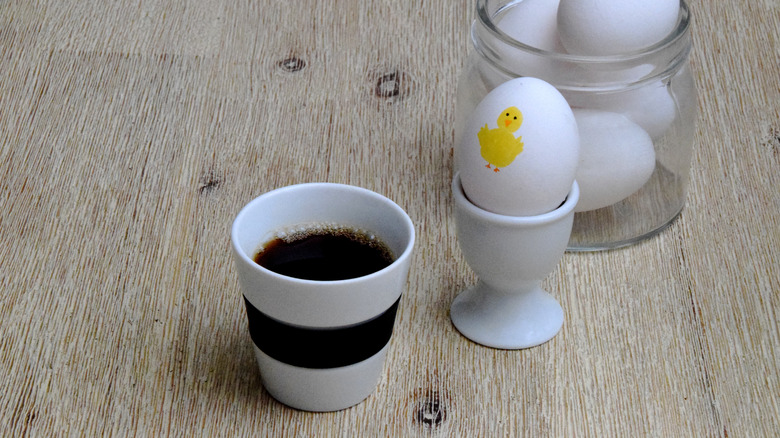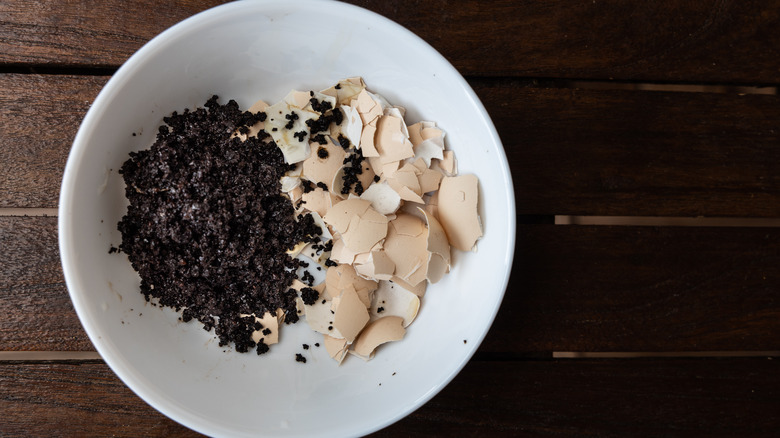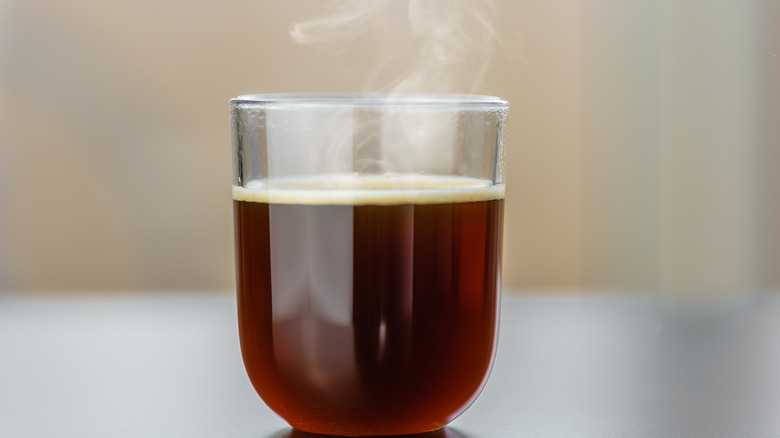Why Swedish Egg Coffee Is Brewed With The Shell
Eggshells have some pretty great uses. They're great for dyeing and decorating at Easter; they make an excellent addition to compost material for gardens and plants — you can even use them as tiny little pots to start seeds in. Come to find out, they also have a place in making a certain type of coffee. Most people would agree that just the idea of potentially crunching into an unexpected piece of eggshell is mildly upsetting, with the concept of sipping one down in your morning cup of coffee being equally disturbing. But, in the case of Swedish egg coffee, eggshells are just as vital as coffee grounds. They don't add flavor or texture, but rather, act as a completely natural filter.
Also called Scandinavian egg coffee, Nordic egg coffee, and "church basement coffee," Swedish egg coffee isn't actually from Sweden. While some claim it came about on American soil, specifically in the Midwest, others believe it was developed on the way from Sweden to America in the late 19th century. Perhaps the coffee grounds and water back then weren't up to par because the purpose of adding eggs to this coffee is to clarify. So don't worry — drinking Swedish egg coffee doesn't mean you'll be sipping up scrambled eggs or chomping on eggshells. It will just taste like an ordinary cup of coffee, albeit, a very good one.
How is Swedish egg coffee made?
The concept of Swedish egg coffee is very similar to how consommé is made. Consommé is a crystal clear soup that is typically seen in old-school fine dining restaurants and in culinary school. Beaten egg whites are added to the soup as it simmers to attract and filter away any solids and impurities in the broth, making it look and taste "pure." To make Swedish egg coffee, you bring some water to a boil. In a separate bowl, combine coffee grounds with a cracked egg. Then, crush the eggshell up a bit and add it to the bowl. Mix everything up until you're left with what looks like a bowl full of sludge, or the mud pies you used to make when you were a kid.
Once the water is boiling, add the coffee-egg mixture to the water and reduce the heat until the mixture is simmering. After a few minutes, turn off the heat and let the mixture sit. Then, add cold water, and what you'll notice is that the solids will sink to the bottom of the pot, leaving the coffee on top. Pour everything through a fine sieve and discard the solids. The coffee is then ready to enjoy.
So, why did we add the eggs, again?
So, really, why all the fuss? Like in the consommé example mentioned earlier, the eggs act as a filter and will cling to any solids and impurities in the coffee. All of this results in a cup of coffee that is noticeably smoother and less bitter than a standard cup of joe. Just using eggs and no shells will give you this result. But the addition of eggshells will take away much of the taste of acidity as well — which is all thanks to the level of calcium in the shell. The calcium won't remove the acidity, but it dilutes the taste, letting you focus on the flavor profile of the coffee itself.
From here, you can doctor it as you normally would your coffee, adding cream and sugar, or nothing at all, or chill it for later to enjoy an iced coffee. This method of making coffee may seem like a lot of steps for a cup of java, but those who appreciate a smooth, clarified coffee may really like the end result. If you're concerned about using raw eggs, note that the boiling water will essentially cook the egg, but it's also a good idea to use very fresh, pasteurized eggs.



